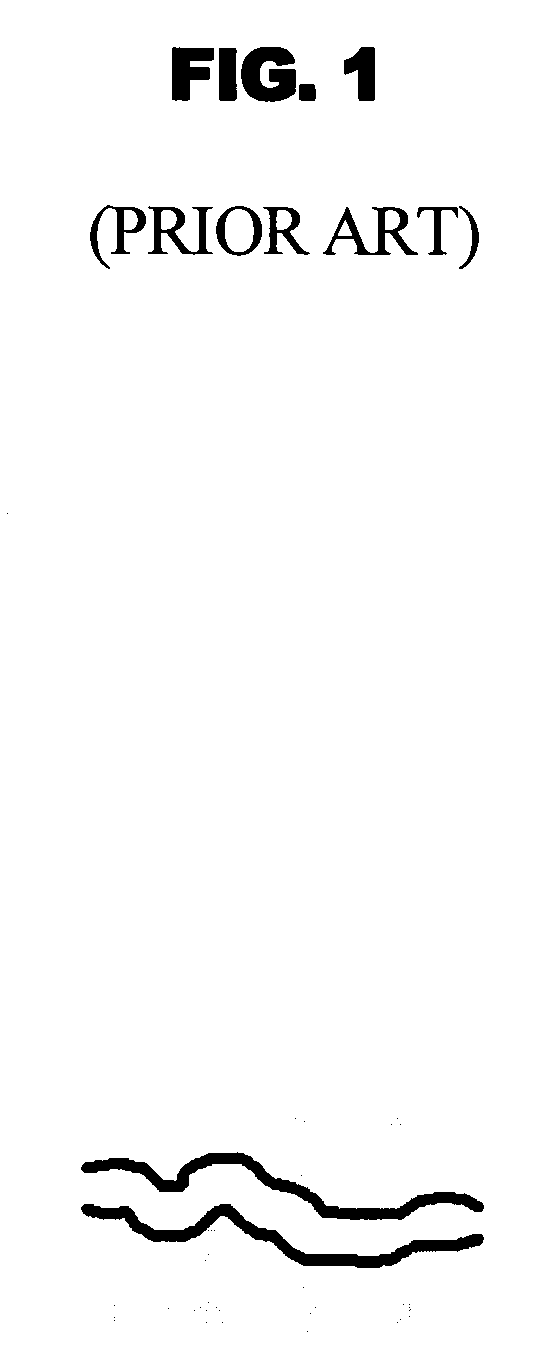Composition for forming low dielectric thin film comprising polymer nanoparticles and method of preparing low dielectric thin film using the same
a technology of polymer nanoparticles and low dielectric thin films, which is applied in the direction of plastic/resin/waxes insulators, transportation and packaging, synthetic resin layered products, etc., can solve the problems of reduced mechanical properties, reduced signal transmission, and reached functional limits, and achieve excellent mechanical strength and low dielectric constant
- Summary
- Abstract
- Description
- Claims
- Application Information
AI Technical Summary
Benefits of technology
Problems solved by technology
Method used
Image
Examples
example 1
[0052] Preparation of Silane Polymer A
[0053] 8.24 mmol of a monomer of Formula 4 (TS-T4Q4) and 3.53 mmol of methyltrimethoxysilane (MTMS, Aldrich) as an alkoxy silane monomer were charged into a flask, and then diluted with tetrahydrofuran (THF) such that the total concentration of a solution was 0.05˜0.07 M. The temperature of the reaction solution was decreased to −78° C. The reaction solution was added with 0.424 mmol of hydrochloric acid and 141.2 mmol of water, the temperature of which was gradually increased from −78° C. to 70° C. At this temperature, the reaction solution was allowed to react for 16 hours. The resultant solution was transferred into a separate funnel, into which diethylether and THF were added in amounts equal to the initially added THF. The reaction solution was washed three times with water corresponding to about 1 / 10 of the total amount of the solvent, and volatile material was removed under reduced pressure to obtain a white powdery polymer. The polymer ...
example 2
[0054] Preparation of Silane Polymer B
[0055] A siloxane monomer of Formula 5 (TCS-2), having a cyclic structure, and MTMS diluted with 100 ml of THF were charged into a flask, and the internal temperature of the flask was decreased to −78° C. At −78° C., a predetermined amount of hydrochloric acid (HCl) was diluted with a predetermined amount of deionized water, to which water was slowly added. The temperature of the reaction solution was gradually increased to 70° C., and the solution was allowed to react at 60° C. for 16 hours. Subsequently, the resultant reaction solution was transferred into a separate funnel, added with 150 ml of diethylether, and washed three times with 30 ml of water. The volatile material was removed under reduced pressure from the reaction solution, thus obtaining a white powdery polymer. The polymer thus obtained was dissolved in a small amount of acetone, after which the polymer solution was filtered using a filter having 0.2 μm-sized pores to remove fin...
examples [UNK]
EXAMPLES 17˜18
[0076] Each dielectric film was prepared in the same manner as in Example 13, with the exception that the polymer B was used as the silane polymer. The properties of the film were measured. The results are given in Table 8 below.
PUM
| Property | Measurement | Unit |
|---|---|---|
| Temperature | aaaaa | aaaaa |
| Temperature | aaaaa | aaaaa |
| Temperature | aaaaa | aaaaa |
Abstract
Description
Claims
Application Information
 Login to View More
Login to View More - R&D
- Intellectual Property
- Life Sciences
- Materials
- Tech Scout
- Unparalleled Data Quality
- Higher Quality Content
- 60% Fewer Hallucinations
Browse by: Latest US Patents, China's latest patents, Technical Efficacy Thesaurus, Application Domain, Technology Topic, Popular Technical Reports.
© 2025 PatSnap. All rights reserved.Legal|Privacy policy|Modern Slavery Act Transparency Statement|Sitemap|About US| Contact US: help@patsnap.com



